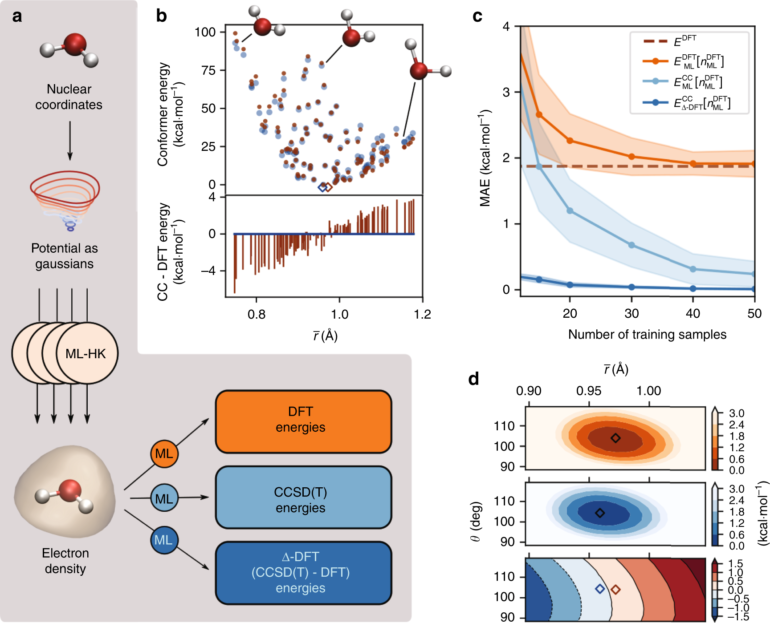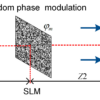Living organisms, ecosystems and the planet Earth are, from a physics point of view, examples of extraordinarily large and complex systems that are not in thermal equilibrium. To physically describe non-equilibrium systems, dynamic density functional theory has been used to date.
However, this theory has weaknesses, as physicists from the University of Bayreuth have now shown in an article published in the Journal of Physics: Condensed Matter. Power functional theory proves to perform substantially better—in combination with artificial intelligence methods, it enables more reliable descriptions and predictions of the dynamics of non-equilibrium systems over time.
Many-particle systems are all kind of systems composed of atoms, electrons, molecules, and other particles invisible to the eye. They are in thermal equilibrium when the temperature is balanced and no heat flow occurs. A system in thermal equilibrium changes its state only when external conditions change. Density functional theory is tailor-made for the study of such systems.
For more than half a century, it has proven its unrestricted value in chemistry and materials science. Based on a powerful classical variant of this theory, states of equilibrium systems can be described and predicted with high accuracy. Dynamic density functional theory (DDFT) extends the scope of this theory to non-equilibrium systems. This involves the physical understanding of systems whose states are not fixed by their external boundary conditions.
These systems have a momentum of their own: they have the ability to change their states without external influences acting on them. Findings and application methods of DDFT are therefore of great interest, for example, for the study of models for living organisms or microscopic flows.
The error potential of dynamic density functional theory
However, DDFT uses an auxiliary construction to make non-equilibrium systems accessible to physical description. It translates the continuous dynamics of these systems into a temporal sequence of equilibrium states. This results in a potential for errors that should not be underestimated, as the Bayreuth team led by Prof. Dr. Matthias Schmidt shows in the new study.
The investigations focused on a comparatively simple example—the unidirectional flow of a gas known in physics as a “Lennard-Jones fluid.” If this nonequilibrium system is interpreted as a chain of successive equilibrium states, one aspect involved in the time-dependent dynamics of the system is neglected, namely the flow field. As a result, DDFT may provide inaccurate descriptions and predictions.
“We do not deny that dynamic density functional theory can provide valuable insights and suggestions when applied to nonequilibrium systems under certain conditions. The problem, however, and we want to draw attention to this in our study using fluid flow as an example, is that it is not possible to determine with sufficient certainty whether these conditions are met in any particular case. The DDFT does not provide any control over whether the restricted framework conditions are given under which it enables reliable calculations. This makes it all the more worthwhile to develop alternative theoretical concepts for understanding nonequilibrium systems,” says Prof. Dr. Daniel de las Heras, first author of the study.
Power functional theory proves to perform substantially better
For ten years, the research team around Prof. Dr. Matthias Schmidt has been making significant contributions to the development of a still young physical theory, which has so far proven to be very successful in the physical study of many-particle systems: power functional theory (PFT). The physicists from Bayreuth are pursuing the goal of being able to describe the dynamics of non-equilibrium systems with the same precision and elegance with which classical density functional theory enables the analysis of equilibrium systems.
In their new study, they now use the example of a fluid flow to show that power functional theory is significantly superior to DDFT when it comes to understanding non-equilibrium systems. PFT allows the dynamics of these systems to be described without having to take a detour via a chain of successive equilibrium states in time. The decisive factor here is the use of artificial intelligence. Machine learning opens up the time-dependent behavior of the fluid flow by including all factors relevant to the system’s inherent dynamics—including the flow field. In this way, the team has even succeeded in controlling the flow of the Lennard-Jones fluid with high precision.
“Our investigation provides further evidence that power function theory is a very promising concept that can be used to describe and explain the dynamics of many-particle systems. In Bayreuth, we intend to further elaborate this theory in the coming years, applying it to nonequilibrium systems that have a much higher degree of complexity than the fluid flow we studied. In this way, the PFT will be able to supersede the dynamic density functional theory, whose systemic weaknesses it avoids according to our findings so far. The original density functional theory, which is tailored to equilibrium systems and has proven its worth, is retained as an elegant special case of PFT,” says Prof. Dr. Matthias Schmidt, who is chair of theoretical physics II at the University of Bayreuth.
More information:
Daniel de las Heras et al, Perspective: How to overcome dynamical density functional theory, Journal of Physics: Condensed Matter (2023). DOI: 10.1088/1361-648X/accb33
Provided by
Bayreuth University
Citation:
Physicists develop powerful alternative to dynamic density functional theory (2023, June 7)



